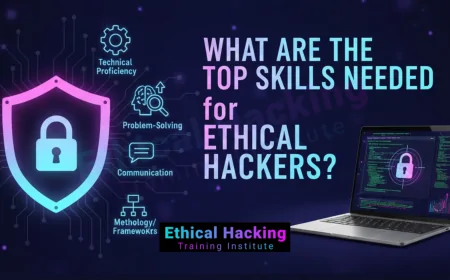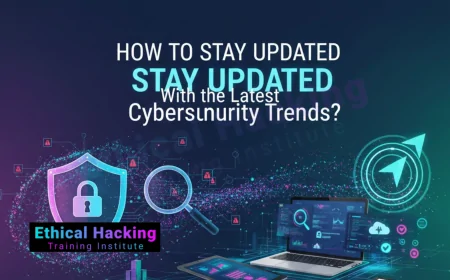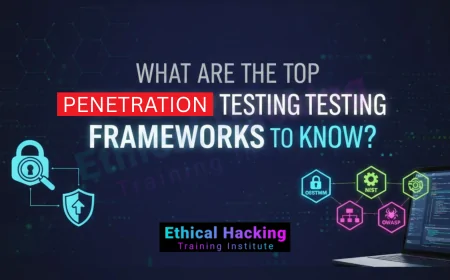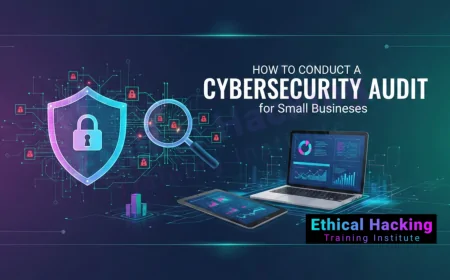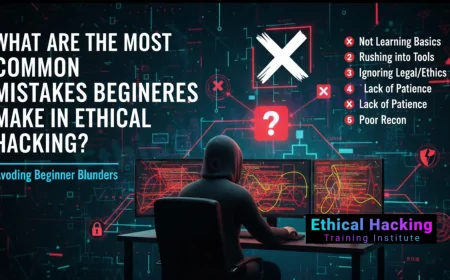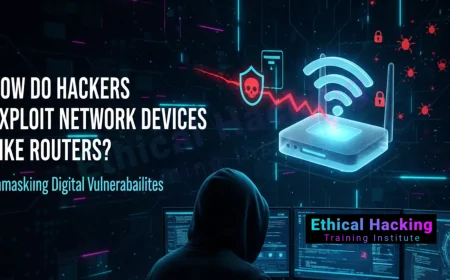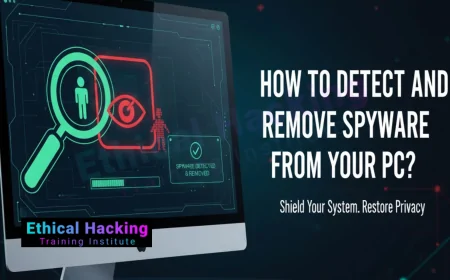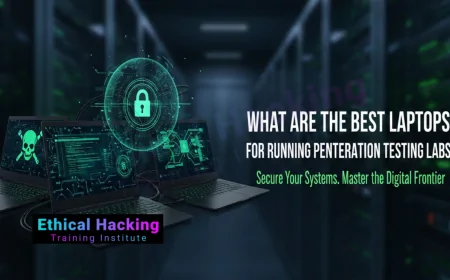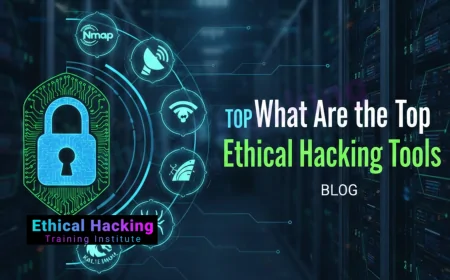What Topics Are Covered in OSCP? A Complete Curriculum Breakdown for Ethical Hackers in 2025
Discover the detailed OSCP curriculum covering penetration testing, buffer overflows, privilege escalation, web attacks, and more. Learn what skills you need to master to pass the OSCP exam and excel as a cybersecurity professional.
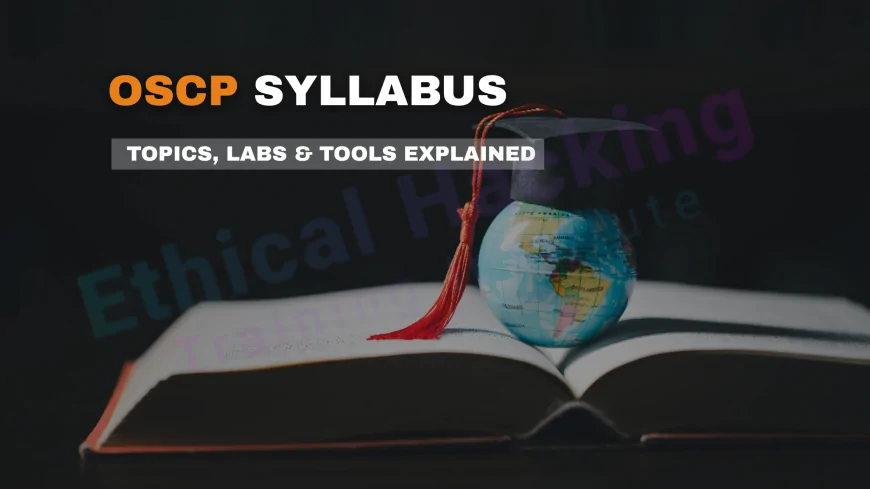
Table of Contents
- What Makes OSCP Curriculum Unique
- OSCP Course Curriculum Breakdown
- OSCP Curriculum Table Summary
- Why Mastering These Topics Matters?
- How to Approach the OSCP Curriculum for Success?
- Conclusion
- Frequently Asked Questions (FAQs)
The Offensive Security Certified Professional (OSCP) is one of the most respected certifications in the field of ethical hacking and penetration testing. Known for its hands-on practical exam, OSCP tests candidates on real-world hacking scenarios, making it a coveted credential among cybersecurity professionals.
If you’re planning to pursue OSCP, understanding the curriculum and topics covered is essential to prepare effectively. In this blog, we will provide a detailed breakdown of the OSCP course content, explain each topic’s significance, and offer insights into how they build your skills as a penetration tester.
What Makes OSCP Curriculum Unique?
Unlike many certifications focused on theory, OSCP emphasizes practical skills and real-world applications. The curriculum is designed to teach you how to think like an attacker, use industry-standard tools, and exploit vulnerabilities in various environments.
OSCP Course Curriculum Breakdown
The OSCP course is primarily centered around the Penetration Testing with Kali Linux (PWK) training, covering the following key topics:
1. Introduction to Penetration Testing
-
Understanding penetration testing methodologies
-
Setting up a penetration testing lab environment
-
Introduction to Kali Linux as the primary OS for testing
2. Linux Fundamentals for Penetration Testing
-
Linux basics and command line navigation
-
File permissions, processes, and networking commands
-
Bash scripting essentials for automation
3. Windows Fundamentals
-
Windows OS architecture overview
-
Command prompt and PowerShell basics
-
Understanding Windows user permissions and services
4. Information Gathering
-
Active and passive reconnaissance techniques
-
Tools like Nmap, Netcat, and Whois
-
Network scanning and service enumeration
5. Vulnerability Scanning
-
Using automated tools (e.g., Nikto, OpenVAS)
-
Interpreting scan results to identify exploitable weaknesses
-
Manual verification of vulnerabilities
6. Buffer Overflows
-
Understanding stack-based buffer overflow attacks
-
Exploit development basics using tools like Immunity Debugger and Mona.py
-
Writing simple buffer overflow exploits in Windows
7. Exploitation Techniques
-
Exploiting common vulnerabilities in services and applications
-
Using Metasploit framework selectively
-
Manual exploitation and payload crafting
8. Privilege Escalation
-
Techniques to escalate privileges on Linux and Windows machines
-
Exploiting misconfigurations, weak file permissions, and vulnerable services
-
Tools like LinPEAS and Windows exploit suggester
9. Client-Side Attacks
-
Social engineering and phishing concepts
-
Crafting malicious payloads and delivery mechanisms
-
Using tools like the Social-Engineer Toolkit (SET)
10. Web Application Attacks
-
OWASP Top 10 vulnerabilities overview
-
SQL Injection, Cross-Site Scripting (XSS), and File Inclusion
-
Manual testing and automated tools like Burp Suite
11. Password Attacks
-
Brute force and dictionary attacks
-
Hash cracking using tools like John the Ripper and Hashcat
-
Password spraying and credential reuse exploits
12. Port Redirection and Tunneling
-
Bypassing firewalls and network segmentation
-
Using SSH tunnels, Netcat, and proxychains
-
Pivoting techniques to reach internal networks
13. Client Exploitation and Post Exploitation
-
Maintaining access with backdoors and persistence techniques
-
Clearing logs and covering tracks
-
Data exfiltration strategies
14. Reporting and Documentation
-
Writing clear, concise penetration testing reports
-
Documenting findings, proof of concepts, and remediation advice
-
Importance of professionalism and ethical considerations
OSCP Curriculum Table Summary
| Topic | Key Learning Points | Tools & Techniques |
|---|---|---|
| Introduction to Penetration Testing | Pen-testing methodologies, lab setup | Kali Linux |
| Linux Fundamentals | Command line, file permissions, scripting | Bash |
| Windows Fundamentals | OS architecture, PowerShell, permissions | CMD, PowerShell |
| Information Gathering | Reconnaissance, scanning | Nmap, Netcat, Whois |
| Vulnerability Scanning | Automated & manual scanning | Nikto, OpenVAS |
| Buffer Overflows | Exploit dev, stack attacks | Immunity Debugger, Mona.py |
| Exploitation Techniques | Manual & automated exploits | Metasploit, manual payloads |
| Privilege Escalation | Escalation methods on Linux/Windows | LinPEAS, Windows exploit suggester |
| Client-Side Attacks | Social engineering, phishing | SET |
| Web Application Attacks | OWASP Top 10, SQLi, XSS | Burp Suite |
| Password Attacks | Cracking, brute force, spraying | John the Ripper, Hashcat |
| Port Redirection & Tunneling | Network bypassing, pivoting | SSH, Netcat, proxychains |
| Post Exploitation & Reporting | Persistence, cleanup, documentation | Custom scripts, report templates |
Why Mastering These Topics Matters?
Each topic in the OSCP curriculum builds your ability to identify and exploit security weaknesses ethically and professionally. Mastering these areas:
-
Prepares you for the 24-hour OSCP exam where you exploit multiple systems.
-
Equips you with skills sought by employers for roles like penetration tester, red teamer, and security analyst.
-
Enhances your understanding of both offensive and defensive cybersecurity.
How to Approach the OSCP Curriculum for Success?
-
Practice regularly: Hands-on labs and practical exercises are crucial.
-
Understand concepts: Don’t just memorize commands—grasp how and why techniques work.
-
Take notes: Document every step during practice to aid report writing.
-
Use official resources: Follow the Offensive Security PWK materials carefully.
-
Join communities: Engage with forums and study groups for shared knowledge.
Conclusion
The OSCP curriculum covers a comprehensive range of topics designed to make you a skilled penetration tester with a strong practical foundation. From basic Linux commands to advanced exploitation and privilege escalation, the course prepares you to face real-world cybersecurity challenges.
If you want to build a career in ethical hacking and cybersecurity, mastering the OSCP syllabus is an essential step. It not only equips you with hands-on skills but also validates your expertise to employers worldwide.
Ready to take the next step? Consider enrolling in a trusted ethical hacking training institute to get guided training on the OSCP curriculum, real labs, and expert mentorship.
FAQs
What topics does the OSCP certification cover?
The OSCP covers penetration testing methodologies, exploitation techniques, privilege escalation, web attacks, buffer overflows, and post-exploitation activities.
Is practical hands-on experience part of the OSCP syllabus?
Yes, the OSCP course emphasizes practical labs where students exploit real machines in a controlled environment.
Does OSCP include Linux and Windows system training?
Yes, OSCP covers both Linux and Windows operating systems, focusing on commands, vulnerabilities, and exploitation.
Are buffer overflow attacks included in the OSCP curriculum?
Buffer overflow exploitation is a core topic, teaching how to identify and exploit these vulnerabilities manually.
What web application vulnerabilities are taught in OSCP?
OSCP includes SQL Injection, Cross-Site Scripting (XSS), and File Inclusion attacks among others.
Does OSCP training cover network scanning and enumeration?
Yes, network scanning, enumeration, and information gathering are foundational skills in OSCP.
Are scripting and automation skills part of OSCP?
Basic scripting in Bash and Python is covered to automate penetration testing tasks.
What tools are taught during OSCP training?
Tools like Nmap, Metasploit, Burp Suite, Netcat, John the Ripper, and Wireshark are extensively used.
Is password cracking included in the OSCP topics?
Yes, password attacks including brute force and dictionary attacks form part of the syllabus.
How important is privilege escalation in OSCP?
Privilege escalation is critical and extensively covered for both Linux and Windows targets.
Does OSCP cover post-exploitation techniques?
Post-exploitation topics such as maintaining access and data extraction are included.
Is report writing part of the OSCP course?
Yes, students must submit a detailed penetration testing report as part of the exam requirement.
Does the OSCP curriculum include active directory exploitation?
While not the main focus, basic Active Directory concepts and exploitation are touched upon.
How long is the OSCP course curriculum?
The official PWK course provides 30 days of lab access with study material before the 24-hour exam.
Are ethical hacking fundamentals part of the OSCP syllabus?
Yes, OSCP covers the ethical and legal aspects of penetration testing.
Is wireless network hacking covered in OSCP?
Wireless attacks are briefly discussed but are not a primary focus.
Does OSCP teach how to exploit vulnerabilities manually?
Manual exploitation is heavily emphasized over automated tools.
Are privilege escalation scripts provided during OSCP training?
No, students learn to find and use privilege escalation vectors themselves.
Does OSCP include learning about web proxies?
Yes, web proxies like Burp Suite are used to analyze and exploit web applications.
Is enumeration a major part of the OSCP exam?
Enumeration is considered a key phase and is critical for successful exploitation.
Does OSCP training cover malware analysis?
Malware analysis is not part of the OSCP curriculum.
Are students taught to use Kali Linux in OSCP?
Yes, Kali Linux is the primary OS used for training and testing.
Is Metasploit heavily used in OSCP?
Metasploit is introduced but the exam encourages manual exploitation skills over heavy reliance on it.
Are buffer overflow protections like ASLR covered in OSCP?
Yes, students learn how to bypass protections such as ASLR and DEP.
Does OSCP training include web application firewalls (WAF) evasion?
WAF evasion techniques are briefly discussed in the context of web attacks.
Is social engineering part of OSCP topics?
Social engineering is not included in the OSCP syllabus.
Does OSCP exam test time management skills?
Yes, managing time effectively during the 24-hour exam is essential for success.
Are network pivoting and tunneling taught in OSCP?
Yes, techniques like port forwarding and VPN pivoting are covered.
Can OSCP certification be achieved without prior experience?
Prior knowledge helps, but the course is designed to teach foundational and advanced skills for motivated learners.
Does OSCP include study material for exam preparation?
Yes, the PWK course includes detailed labs, videos, and a lab guide.
What's Your Reaction?
 Like
0
Like
0
 Dislike
0
Dislike
0
 Love
0
Love
0
 Funny
0
Funny
0
 Angry
0
Angry
0
 Sad
0
Sad
0
 Wow
0
Wow
0
